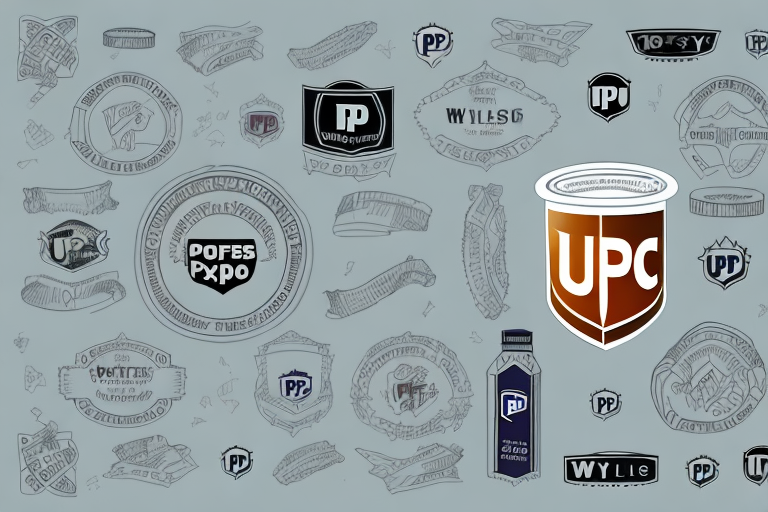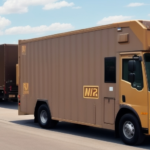Comparing Pest Rates for Shipping Packages with PO, UPS, and FedEx
When it comes to shipping packages, an often-overlooked cost is pest rates. These rates can significantly impact the overall cost of shipping and should be a crucial factor in choosing a shipping method. In this article, we explore different shipping options, analyzing the pros and cons of each concerning pest rates. We also discuss how to select the best shipping method for your business needs and provide tips for managing and reducing pest rates in your shipment process.
Why Pest Rates Matter When Shipping Packages
Pest rates refer to the likelihood of pests being present in shipments during transit. These pests can include insects, rodents, and other small animals that can damage the contents of the package or spread diseases. Beyond health and safety concerns, pest infestations can lead to costly damages and delays. According to the American Shipping Association, pest-related damages account for approximately 5% of all shipping-related losses annually.
To reduce the risk of pest infestations during shipping, use packaging materials resistant to pests. For example, opting for plastic containers instead of cardboard boxes can prevent rodents from chewing through packaging. Additionally, using sealable bags or containers helps keep pests out of the package.
The destination of the shipment also plays a significant role in pest rates. Certain areas, particularly those with tropical climates, have higher pest prevalence. In such cases, choosing a shipping method that includes fumigation or other pest control measures can be beneficial.
Understanding the Different Shipping Options: PO, UPS, and FedEx
There are three primary shipping options: Post Office (PO), UPS, and FedEx. Each option has its strengths and weaknesses concerning pest rates.
- Post Office (PO): Often the most cost-effective, PO services may have higher pest rates due to less stringent pest control measures.
- UPS: Known for reliability and faster delivery times, UPS has robust pest prevention protocols but may come at a higher cost.
- FedEx: Similar to UPS in terms of speed and reliability, FedEx also implements strong pest control measures, potentially offering a balanced option between cost and pest prevention.
It's essential to consider not just the cost but also the speed of delivery, reliability, and tracking options when choosing a shipping method. For instance, while PO might be cheaper, UPS and FedEx offer more reliable tracking and faster delivery times, which can be crucial for high-value or perishable items.
How to Choose the Best Shipping Method for Your Business Needs
When selecting a shipping method, several factors come into play, including package size and weight, destination, and shipment urgency. Additionally, consider the shipping method's handling practices, packaging types, and any pest prevention measures. Here are key considerations:
- Handling Practices: Ensure the shipping service follows best practices to minimize pest exposure.
- Packaging: Use pest-resistant packaging materials.
- Pest Prevention Measures: Opt for shipping methods that include fumigation or other pest control methods.
- Cost vs. Service: Balance the cost with the level of service required.
- Environmental Impact: Consider eco-friendly shipping options to reduce your carbon footprint.
By evaluating these factors against your business needs, you can make an informed decision on the most suitable shipping method.
Moreover, considering the environmental impact of your shipping choices is increasingly important. Some companies offer sustainable options, such as using electric vehicles or minimizing packaging waste, which can enhance your brand's appeal to environmentally conscious customers.
The Impact of Pest Rates on Your Shipping Costs
Pest rates can significantly affect your shipping costs. A pest infestation during transit may require replacing damaged goods and could result in fines or fees from the shipping company for non-compliance with pest prevention measures. According to a 2022 report by ShipScience, businesses can lose up to 2% of their annual revenue due to pest-related shipping issues.
Beyond immediate financial implications, pest infestations can cause shipment delays, leading to lost revenue and potential damage to your reputation. Severe infestations might even result in legal actions against your company. Therefore, implementing proactive pest prevention measures and partnering with reputable shipping companies that prioritize pest control is essential.
Analyzing the Pros and Cons of Each Shipping Method for Pest Rates
Each main shipping option—PO, UPS, and FedEx—has distinct advantages and disadvantages concerning pest rates:
- Post Office (PO):
- Pros: Cost-effective, extensive network.
- Cons: Slower delivery, potentially higher pest rates.
- UPS:
- Pros: Fast and reliable delivery, strong pest prevention measures.
- Cons: Higher cost compared to PO.
- FedEx:
- Pros: Reliable tracking, efficient delivery, comprehensive pest control protocols.
- Cons: Can be more expensive than other options.
When deciding, consider the type of products you're shipping. Items like food or plants are more susceptible to pest infestations and may benefit from shipping methods with robust pest prevention measures.
Additionally, the risk of pest infestations varies based on the shipping origin and destination. Shipping to high-risk areas might necessitate selecting a method with enhanced pest control, even if it incurs higher costs.
How to Reduce Pest Rates When Shipping with PO, UPS, and FedEx
Implementing effective techniques can significantly reduce pest rates across all shipping options:
- Use Sturdy, Sealed Packaging: Ensure all packages are well-sealed to prevent pest entry.
- Avoid Attractive Packing Materials: Refrain from using materials that attract pests, such as food products.
- Utilize Shipping Company’s Pest Prevention: Take advantage of any pest prevention measures offered by the shipping service.
- Clean and Inspect Items: Thoroughly clean and inspect all items before packaging to remove any potential pest attractants.
- Proper Disposal: Dispose of any packaging materials or containers that may have been exposed to pests.
Additionally, consider implementing pest-resistant packaging solutions such as sealed plastic bags or containers. Regularly inspecting and cleaning shipping containers before use can further minimize pest risks.
Tips and Tricks for Managing Pest Rates in Your Shipment Process
Effective management of pest rates involves a comprehensive approach:
- Store Packages in Clean, Dry Areas: Prior to shipment, ensure packages are stored in environments that do not attract pests.
- Avoid High-Pest Seasons: Schedule shipments during periods with lower pest activity.
- Engage Pest Control Professionals: Utilize pest control experts to identify and manage potential pest issues.
Additional tips include:
- Thorough Inspection: Inspect and clean shipping containers for signs of pest activity before use.
- Use Pest-Resistant Packaging: Employ packaging materials that deter pests from accessing shipments.
By adopting these strategies, you can proactively reduce the likelihood of pest infestations during transit.
Comparing the Overall Costs of Shipping with PO, UPS, and FedEx
When comparing the overall costs of PO, UPS, and FedEx, consider both the financial costs and the potential costs associated with pest infestations.
- Post Office (PO): While PO is typically the cheapest option, it may lack the pest prevention measures that companies like UPS and FedEx offer, potentially increasing the risk of pest-related costs.
- UPS and FedEx: These services are generally more expensive but provide enhanced pest control measures, reducing the risk of additional pest-related expenses.
Additionally, the speed of delivery should be factored into your cost analysis. Faster delivery options may come at a premium but can be crucial for time-sensitive shipments.
Customer service is another vital factor. Reliable customer service ensures that any issues, such as lost or damaged packages, are handled efficiently. Researching customer reviews and ratings can provide insights into the quality of customer support each shipping company offers.
A Comprehensive Guide to Calculating Pest Rates for Your Shipments
Calculating pest rates involves evaluating several factors, including destination, the nature of the goods, and the chosen shipping method. Here’s a step-by-step guide:
- Assess the Destination: Determine the pest prevalence in the shipping destination. Use resources like the Environmental Protection Agency to understand regional pest risks.
- Evaluate the Goods: Identify if the products are susceptible to pest infestations (e.g., food items, plants).
- Select the Shipping Method: Choose a shipping method with robust pest prevention measures based on your assessment.
- Implement Preventive Measures: Utilize pest-resistant packaging and consider additional pest control treatments like fumigation.
- Monitor and Adjust: Continuously monitor pest rates and adjust shipping practices as needed to minimize risks.
By following these steps and utilizing the tips discussed, you can accurately estimate pest rates for your shipments and select the most appropriate shipping method to mitigate pest-related risks.
In conclusion, pest rates are a critical but often overlooked aspect of shipping packages. By factoring in pest rates when selecting a shipping method and applying effective pest prevention strategies, businesses can minimize the risk of costly infestations. Comparing and analyzing the pros and cons of each shipping method, alongside evaluating overall costs and pest prevention measures, enables you to make informed shipping decisions tailored to your business needs.
Remember, pest rates can fluctuate based on seasonal changes and destination climates. For instance, shipments to tropical regions may face higher pest risks due to warm and humid conditions. It is essential to research these factors when calculating pest rates and implement appropriate measures such as pest-resistant packaging and fumigation treatments to safeguard your shipments.




















